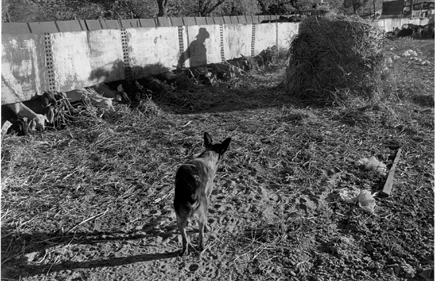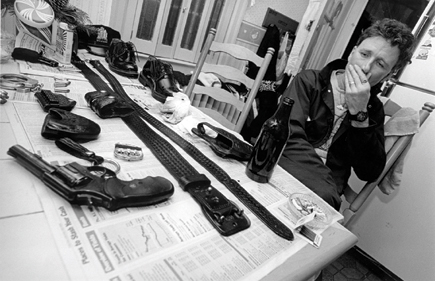Eugene Richards; Personal Documents Of Our World
The low, harsh light of late day played unmercifully on the withered body of
an old woman, reflecting on the face of the beautiful baby she carried on her
back. Eugene Richards saw the tall, angular 80-year-old woman, a rare sight
in a drought-ridden land where people die long before their time.
"I was conscious of using my camera," Richards says. "I knew
this was a women's community. There was little water and no longer any
work for men. I asked if I could photograph the baby but expressed my concern
to the woman that she was partially uncovered."
"At my age it doesn't matter," she said as she dropped the
cloth from her shoulder. "Here I am."
"And I made the photograph."
 |
|
|
The woman had walked seven miles to the hospital and the baby died that night
of chronic malnutrition. Now she would carry the lifeless child the seven miles
home. It was 120Þ.
"I went to the service in the little community where they buried the baby,"
Richards recalls. "The old woman came up to me and asked if I would take
one more picture."
"I want a picture of me with a fat baby," she said. "I don't
want you to go home only representing us with a dying baby."
"It was the last picture I took in Niger, Africa."
Published by Phaidon, The Fat Baby became the title of Richards' most
recent book, a powerful documentary of the many lives he has touched. The photographs
are damp with tears but colored with integrity and touch on familiar themes
from the moment of birth to the tears of old age, to joy and to loss, and to
people and places we will never see.
 |
|
|
One of the great social documentary photographers of our era, Richards and
his work are one. He is always deeply involved. He shows us a young Sicilian
woman moments after she has given birth, holding the infant to her as tears
of joy slide down her cheeks. Her husband bends to kiss her, still draped in
his surgical gown. The photograph, part of the "American Family"
series, was done for Life magazine.
Emotions ran high as Richards documented the joint parenting of two gay couples.
The series titled "Here's to Love" borders on the edge and
the magazine assignment became history when Richards photographed the innocent
picture of the baby in a bathtub with one of the men.
"The editor said the baby was learning sexuality from the father,"
Richards tells us, "and I tried to make a point to this editor asking,
`Well, what did you learn about sexuality from your parents? Probably
about as much as I did--nothing!'"
 |
|
|
Quiet spoken but feisty--that's Eugene Richards. He came up the
hard way in a loving but somewhat dysfunctional family who stirred an anger
and confusion within him as he wandered around taking pictures.
In college he studied with Minor White. "I was wired to him and his idea
of teaching in a lot of ways," Richards says. "It was more in a
spirit of meditation and study I found totally insane--like the worst of
going to church! In retrospect, it became a whole different world that I came
to treasure. White taught me to look at light and to slow down and see things
in a more meditative fashion, to become more involved."
Richards admits he may not be responding just to the moment. "Photography
is changing," he says, "especially photojournalism. It is said that
it is becoming more illustrative. You can use a picture of a person to represent
a situation and photos are becoming more metaphorical, less specific. There's
more blur, more abstraction. I try to make my photographs of who the person
is, to capture their own emotion at that time."
There are occasions when Richards resorts to old-fashioned, hard-core brutal
reporting such as the series he shot in Mexico while working with a human rights
group. He photographed a men's psychiatric ward, the emptiness and the
barely clad inmates alongside a pool of urine cascading through the center of
his frame. It was only 48Þ there and the men were getting cold showers
poured from a bucket.
"I took those photographs in 11/2 hours," Richards says. "You
just keep moving in situations like that. You can't stop because you would
really get upset. Mental illness is too close to everybody. Nobody wants to
lose their mind. They fear that more than they fear dying."
Richards does not make many happy pictures, but for those of us who have experienced
living with the dementia of a family member we can empathize as he photographs
an elderly woman looking intently as she tries to recognize the face of her
husband. He wonders, who has control of us at the end of our life? What rights
do the elderly have to determine their own destiny?
 |
|
|
In the mid-1990s Richards was on assignment for Newsweek about the rising homicide rates due to drugs.
































